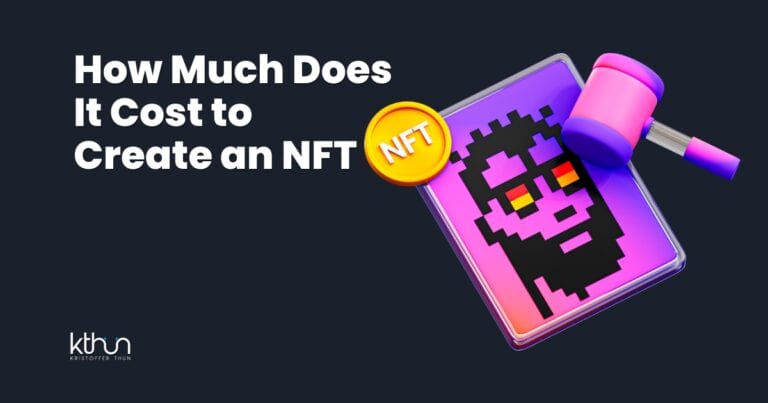Have you ever wanted to be a legendary hero, explore alien planets, or chat with a virtual panda?
Welcome to the boundless immersive Virtual Reality (VR) universe!
In this lively tour, we’ll unravel the diverse types of virtual reality, explore its thrilling applications, and glimpse the future.
So, grab your digital snorkel🤿 as we plunge into a world where the virtual is virtually limitless!🚀
I partner with awesome companies that offer products that help my readers achieve their goals! If you purchase through my partner links, I get paid for the referral at no additional cost! For more information, visit my disclosure page.
Key Takeaways
VR comes in 3 main types: non-immersive, semi-immersive, and fully immersive.
Augmented Reality is bridging the gap between real & virtual worlds.
VR has a wide range of applications with the potential to revolutionize how we live, work & interact with the world.
Understanding Virtual Reality: A Brief Overview

Virtual reality (VR) allows users to experience interactive and immersive environments created by computers.
VR technology aims to provide a truly intense and engaging experience, transporting you from the real world to a virtual one.
The uses of virtual reality tech are vast and varied, including:
Real estate
Virtual medical training
Collaborative VR
The virtual reality industry is expected to reach US $20.9 billion with a compound annual growth rate of 27.9% by 2025.
During the pandemic, the use of VR technology significantly increased as people demonstrated its versatility and adaptability.
Virtual reality has made significant progress since its inception, and with the advancement of technology, it continues to provide more lifelike and engaging experiences.
Some examples of how virtual reality can be used include:
Exploring a virtual gaming zone.
Connecting with colleagues in a virtual meeting room.
Taking virtual tours of museums or landmarks.
Training simulations for various industries, such as healthcare or aviation.
The possibilities are endless!
Extended reality (XR) is an umbrella term that encompasses VR, augmented reality (AR), and mixed reality (MR), blurring the lines between the real world and the virtual one.
As the market grows and XR technologies become more sophisticated, you can expect more customization and visualization options, creating a more realistic and captivating experience.
The Core Types of Virtual Reality

Grasping the different types of virtual reality:
Non-immersive
Semi-immersive
Fully immersive
It is fundamental to understand this world fully.
Each category caters to different user needs and preferences, offering a unique experience.
We’ll now scrutinize these core types to discover their distinct characteristics.
Non-Immersive Virtual Reality

In immersive VR, users control and interact with a computer-generated environment without direct physical interaction. This type of VR is commonly experienced through devices like PlayStation, Xbox, and PC within virtual gaming zones.
An example of non-immersive VR in action is strategic games used by the US Defence Force to hone planning and strategic skills by simulating physical surroundings and situations.
Non-immersive VR allows users to experience a virtual environment without fully immersing them.
The virtual world can be explored through a computer or other devices.
However, the level of immersion is limited compared to other types of VR.
This virtual reality is beneficial for applications where the user needs to maintain a connection to the real world, such as learning, training, or gaming.
Although non-immersive VR lacks the depth of immersion in fully immersive VR, it can still offer highly engaging and interactive experiences.
Its accessibility and ease of use make it a popular choice for many, allowing them to dip their toes into the world of virtual reality without the need for specialized equipment or extensive training.
Semi-immersive Virtual Reality
Semi-immersive VR balances non-immersive and fully immersive experiences, offering a more interactive virtual experience without completely cutting them off from the real world.
This type of VR is commonly used for educational or training purposes, with virtual tours being the most popular example.
You navigate semi-immersive VR environments using a computer mouse, touch and swipe gestures on mobile devices, or Gyroscope-supported movement, all while viewing the content on a computer screen.
This virtual reality provides an immersive experience without requiring a significant investment in specialized equipment, making it an attractive option for businesses and educational institutions.
Semi-immersive VR offers a versatile, accessible way to explore and interact with virtual environments.
It is ideal for virtual real estate tours, remote learning, and training.
Fully Immersive Virtual Reality
For a complete and ultra-realistic virtual experience, specialized equipment like highly immersive VR is a must.
- VR Headset
Body connectors
Sensors
Gloves
Helmets
This type of VR allows you to interact with a virtual environment in a new way.
It is popular in console applications, video game applications, and medical training, providing an incredibly lifelike and engaging experience.
One exciting example of fully immersive VR is SandboxVR, where you wear headsets and gear to battle other players in a small room, fully immersed in a virtual world.
In medicine, VR trains neurosurgeons for complex brain surgeries, allowing them to practice and refine their skills in a safe and controlled environment.
With technological advancements enhancing user experience and broadening its applications, the future of fully immersive VR looks promising.
As more industries recognize the potential of fully immersive VR, it is poised to transform how we live, work, and interact with the world around us.
Augmented Reality and Its Role in the VR Landscape
Augmented reality (AR) is an innovative technology that adds virtual objects to the physical world, bringing a digital layer into our daily lives.
Even though AR is different from virtual reality, it still has a crucial role in the VR industry by improving our interactions with real and digital environments.
AR is particularly popular in the retail and home decoration industries, where businesses like furniture suppliers utilize the technology to help customers visualize products in their homes before purchasing.
This practical application of AR technology showcases its potential to revolutionize how we shop and interact with our surroundings.
The line between the real and virtual worlds will increasingly blur as AR technology evolves and integrates with VR.
We can expect even more immersive and engaging experiences as these technologies converge, further shaping the landscape of virtual reality and how we interact with digital elements in our everyday lives.
Collaborative VR: Connecting People in Virtual Spaces
Collaborative VR creates a virtual world where people in different locations can interact and collaborate, appearing as 3D characters or projections through virtual reality technology.
The primary aim of Collaborative VR is to bring people together, enabling them to collaborate and communicate more effectively in a shared virtual space.
Examples of Collaborative VR apps:
Virtual Conferencing Apps: Facilitating remote business interactions.
Virtual Debate Tournaments: Enabling distanced competitive engagements.
Virtual Escape Rooms: Team problem-solving and entertainment in a shared virtual environment.
By providing immersive and engaging experiences, Collaborative VR allows you to forge connections and work together in previously unimaginable ways.
With a growing number of applications and use cases across various industries, the future of Collaborative VR looks bright.
As virtual reality technology advances, we can expect even more innovative and immersive ways for people to connect and collaborate in virtual spaces.
Applications and Benefits of Virtual Reality
Virtual reality boasts a multitude of applications and advantages across diverse sectors, such as:
Healthcare
Retail
Automotive
Sports
Education
From virtual medical training and practicing skills to taking a virtual tour of homes or hotels, there is no shortage of ways VR technology can be used to enhance our lives.
In the retail industry, VR has taken shopping to new heights, allowing customers to try on clothes eyeglasses, and even visualize furniture in their homes before purchasing.
Sports teams like NFL coaches use VR to train their players, while car enthusiasts can experience the latest Porsche models virtually, exploring its features and customization options through vr systems.
With the market size for virtual reality projected to reach $54 billion by 2026, the potential for VR technology is vast and ever-growing.
With technological advancements and increasing adoption across various sectors, VR shapes how we live, work, and interact with the world around us.
The Future of Virtual Reality: Trends and Predictions

The future of virtual reality holds unquestionable promise.
With the integration of VR with other technologies like AI and IoT and increased accessibility, we can expect the VR and AR market to continue growing with more applications and use cases.
VR is already making waves in sectors like:
Retail
Remote Education
Native Advertising
And much more
You can expect even greater immersion and more realistic experiences as technology improves.
Furthermore, as affordable and user-friendly headsets make VR more accessible, they will continue gaining popularity and redefining how we experience digital content.
In conclusion, a bright future filled with possibilities awaits virtual reality.
As technology advances and the VR and AR market grows, we can anticipate a world where virtual reality plays a crucial role in how we live, work, and interact with one another and our surroundings.
That’s a Wrap
In this blog post, we navigated the intriguing world of virtual reality, touching on the different types of VR, their applications, and the promising future awaiting them.
From non-immersive to fully immersive experiences, virtual reality opens doors to many opportunities to enrich our lives, whether through gaming, education, healthcare, or collaborative endeavors.
The future of virtual reality is bright, with technological advancements, broader adoption across various sectors, and the melding of VR with other technologies paving the way for how we live, work, and interact.
As we stretch the limits of what’s achievable in the virtual sphere, it’s clear that VR will play a pivotal role in shaping our digital experiences moving forward.
Frequently Asked Questions
What are the three types of virtual reality?
Virtual reality has three primary categories: non-immersive, semi-immersive, and fully immersive simulations, all providing unique experiences.
What is an example of a semi-immersive VR?
A semi-immersive VR example is a flight simulator, which allows you to move around and interact in a virtual 3D environment on a computer screen or through a VR headset.
How is augmented reality different from virtual reality?
Augmented reality brings virtual elements into our real world, whereas virtual reality takes you into a completely virtual environment.
What is the role of Collaborative VR in the virtual reality landscape?
Collaborative VR allows people to work or play together in a shared virtual environment, no matter how far apart they may be. This plays an important role in today’s virtual reality landscape.
What are some trends and predictions for the future of virtual reality?
Virtual reality technology is rapidly evolving, becoming more accessible, integrated with AI and the Internet of Things, and seeing a growing market for applications. VR is set to have a significant impact in the coming years.






